Blow Flies / Flesh Flies / Dung Flies
Filth Flies are medium-sized flies that are attracted to human and animal waste and decaying garbage. Because of these habits, they are capable of transmitting filth-related diseases such as diarrhea and dysentery. Included in this category are Blow Flies, House Flies, Flesh Flies and Dung Flies.
Blow Flies (family Caliphoridae) are so-called because the larvae develop inside the bodies of dead animals, causing the carrion to have a bloated appearance. Some are instrumental in helping crime scene investigators solve homicides. By determining which species are present and at what stage of development, detectives work backward to estimate time of death. Blow flies are about the size of house flies or slightly larger. They have been called “bottle flies” because their shiny blue and green color resemble colored glass bottles, though some species are shiny black or bronze. Adult blow flies feed primarily on flower nectar, plant sap, and other sugary materials. There are about 80 species of blow flies in North America.
House Flies and allies (family Muscidae) are found worldwide and may be the most numerous of all insects. Larvae of most species feed in manure or decaying organic matter. Some feed on living plant tissue while others are predators of other insect larvae and small invertebrates. Adults feed on a variety of liquid food and regurgitate liquids from their stomach to liquefy solid morsels. There are more than 600 species in North America. House flies typically lay eggs on animal feces and garbage. White, legless maggots (the larval stage) hatch from the eggs. When fully grown after about 7-10 days, maggots crawl away from their food source to undergo the pupal stage. They form a dark brown cocoon, known as a puparium, and later emerge as adult house flies that can fly one or two miles in search of suitable egg-laying sites.
Flesh Flies (family Sarcophagidae) usually seek carrion or scraps of meat on which to lay their eggs. Like house flies, adult flesh flies are dark-colored (gray or black). Common species have three dark stripes on the thorax. They are slightly larger than house flies and have a checkerboard pattern on the abdomen. There are approximately 250 species north of Mexico. Dung Flies (Scathophagidae) are predatory as adults, while the larvae feed on mammal droppings, are leaf miners or plant feeders depending on the species. There are about 150 species in North America.
Disclaimer: The content of NatureSearch is provided by dedicated volunteer Naturalists of Fontenelle Forest who strive to provide the most accurate information available. Contributors of the images retain their copyrights. The point of contact for this page is: Loren Padelford.
-
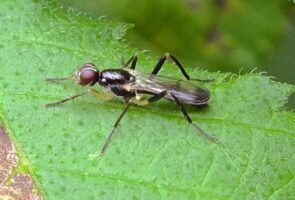 DUNG FLY
DUNG FLY
-
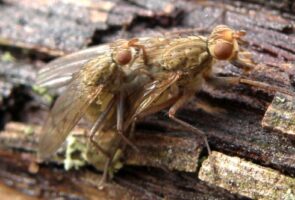 YELLOW DUNG FLY
YELLOW DUNG FLY
-
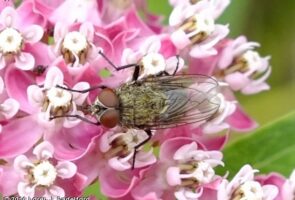 CLUSTER FLY
CLUSTER FLY
-
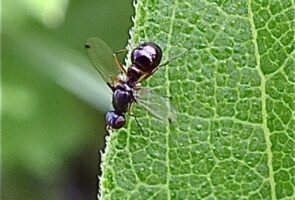 BLACK SCAVENGER FLY
BLACK SCAVENGER FLY
-
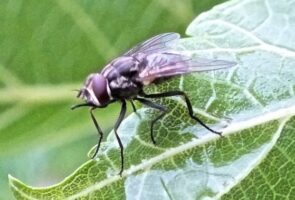 STABLE FLY
STABLE FLY
-
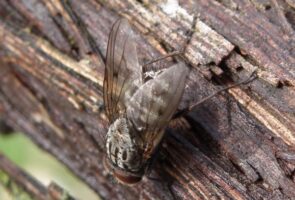 MUSCIDAE SP.
MUSCIDAE SP.
-
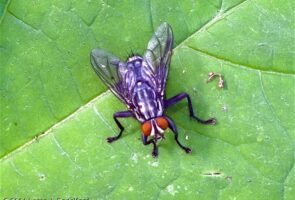 SARCOPHAGIDAE SP.
SARCOPHAGIDAE SP.
-
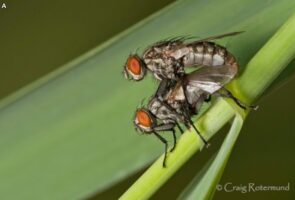 SARCOPHAGIDAE SP.
SARCOPHAGIDAE SP.
-
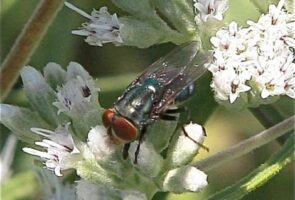 SECONDARY SCREWWORM FLY
SECONDARY SCREWWORM FLY
-
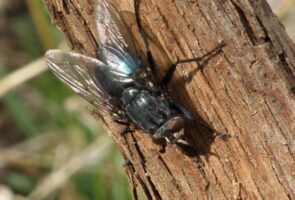 SHINY BLUE BOTTLE FLY
SHINY BLUE BOTTLE FLY
-
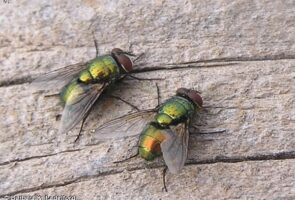 COMMON GREEN BOTTLE FLY
COMMON GREEN BOTTLE FLY
